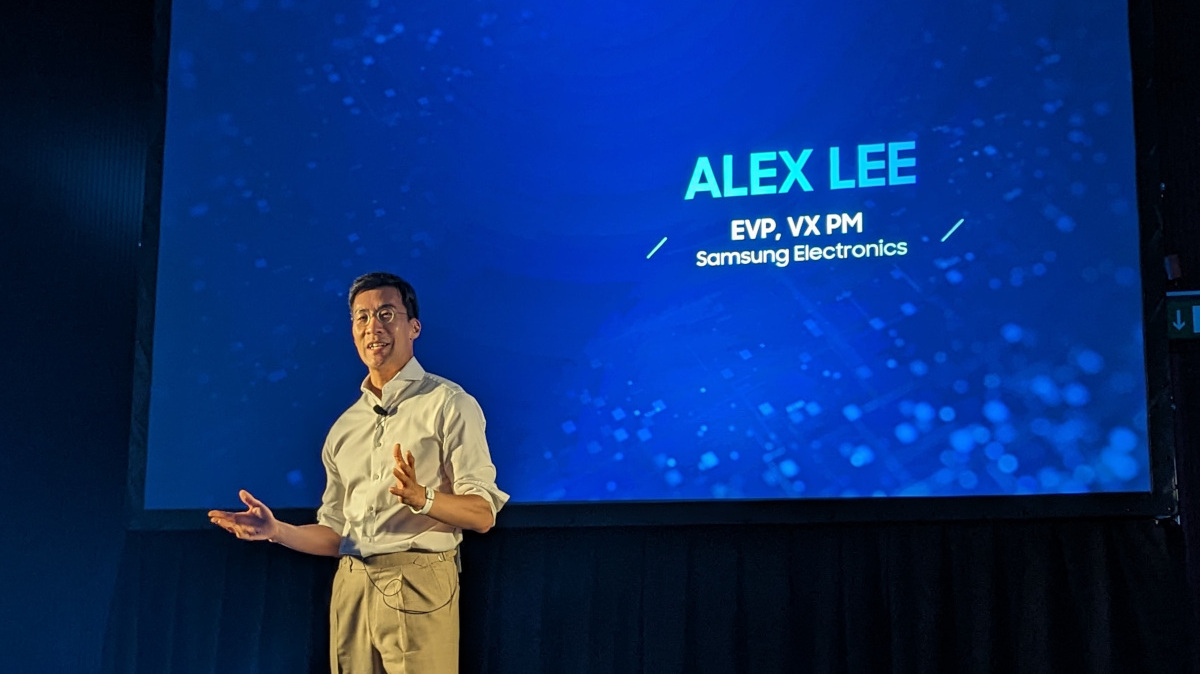Barcelona | For a year, we have been seeing previews, soft launches, and announcements – now it's official: At ISE 2024, Samsung announced the global availability of its VXT platform. This could be a game changer, both for Samsung and the digital signage industry.

VXT: A Game Changer for Samsung
The biggest surprise for the digital signage industry was how long Samsung has dragged out the global launch of its VXT platform. At ISE 2023, Samsung had already presented the new digital signage software platform to partners behind closed doors. Since Infocomm in June, the company has regularly showcased the Visual Experience Transformation Platform publicly at trade shows. But the official launch took place only now, on January 31 during ISE 2024.
Participants at the invidis conference DSS ISE had received a first look in the morning of the launch day: On stage, European Samsung Vice President Simon Jackson explained the revolution of the new business model: VXT is more than just a cloud-native successor to Magicinfo. With VXT, Samsung introduces a subscription-based platform business, including an App Store for digital signage partner applications.
Both independent CMS providers and content service providers are invited to offer their services via VXT. The revolution lies in the distribution model – from 2025, Samsung will also start directly distributing VXT to end customers. Simon Jackson is aware of the concerns integrators have of this business model – but he sees a lot of potential for Samsung Ecosystem partners to benefit from the new global platform. He only sees Samsung’s role as a platform operator in the value chain changing.
Simon Jackson was joined on stage by two Samsung partners who are the first Pre-Integrated Repeatable Solution (“PIRS”) partners to be integrated into the new VXT ecosystem: Bertrand Issard from French digital signage software provider Ngine Networks and Bastiaan Amsing from the Global Signage Alliance (GSA). Ngine has already adapted several vertical market applications to VXT, as have members of the GSA.
Samsung provides development tools, codes, and design guidelines, allowing developers to create tailored solutions. This is done through the Wine framework, which connects the Samsung VXT backend to the CMS Canvas and the VXT Player with the backend of the respective PIRS partners. The goal is to create a complete in-app experience for the end customer: from software to content development.
With this structure, Samsung aims to open up app development to the global developing community, with applications that can be globally subscribed to via Samsung’s App Store.
Samsung offers the big stage to early partners
At the official VXT launch, VXT boss Alex Lee explained the details of the new platform model to the globally assembled Samsung partner community, wich he touts as a game-changer.
The mastermind behind VXT confidently presented Samsung’s vision: to create a large platform for companies that covers everything with an open app store. “B2B business is always about solving customers’ challenges. However, the fact that these are incredibly diverse then becomes a challenge in itself,” said Alex Lee. According to him, medium-sized and small companies in particular are not exploiting the potential of digital signage because there is no simple and standardized access to digital signage applications.
VXT is intended to gibt them this simple and standardized access, opening up the potential of digital signage for IT integrators in particular. In Samsung’s vision, subscribing to software, content etc. should be as easy as on smartphones. This requires a central platform, and who else but Samsung, the world’s dominant market leader with a market share of 35 to 40 percent, can introduce such a platform. Samsung is also focusing on cyber security with Samsung Knox – an IT security-certified module in the operating system that is unique in the digital signage market to date.

The complete App Store is set to be launched by Samsung in 2025. Among already existing partners who presented their applications at the launch is Wisar Digital. They introduced a simple QSR application that connects orders on a Samsung Kiosk with a dashboard for preparation and a digital pickup display. Wisar is excited: “With VXT, we get access to Samsung’s massive customer base.”
Samsung wants to give customers fast access to the system. In addition to a free 60-day trial, during which all previous data is transferred after purchase, the company also emphasizes fast licensing – a license is created up to 10 minutes after the request.
invidis commentary
Samsung wants to bring digital signage out of its niche. This requires standards, simple distribution models, and uniform user experiences. In other words, a leading digital signage platform. VXT is expected to take on this role for Samsung, leading digital signage to become a B2B mass product.
It is no longer enough to rely solely on digital signage integrators who master the technical challenges and complex distribution. For established partners, VXT is both an opportunity and a risk. Offering software, content, and more via VXT provides global access to potential customers but requires accepting the new distribution model.
On the other hand, Samsung VXT can bring in new competition, allowing even IT integrators or online providers with no experience in the market to have a broad digital signage offering. This brings new competition in the long-tail business. Large enterprise customers are unlikely to subscribe to software via the App Store – here, customized solutions and data integrations play an important role.
But to make digital signage a B2B mass market, the industry must break out of the silo. Samsung is following its strategy with consistency, which has the potential to become a game changer.
Florian Rotberg
